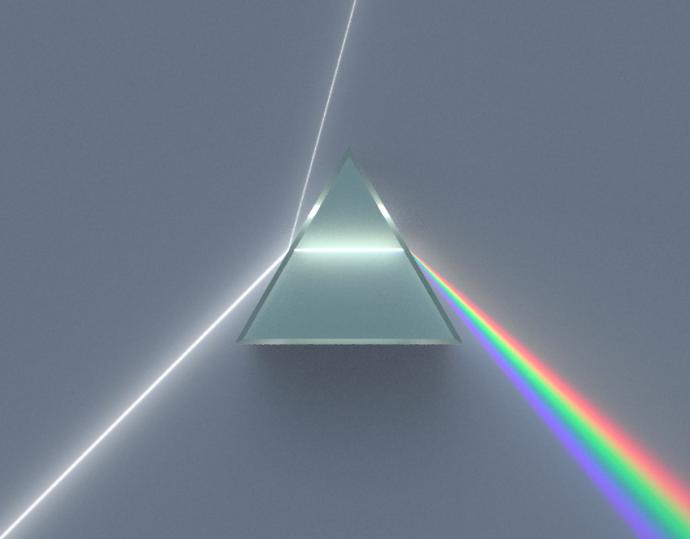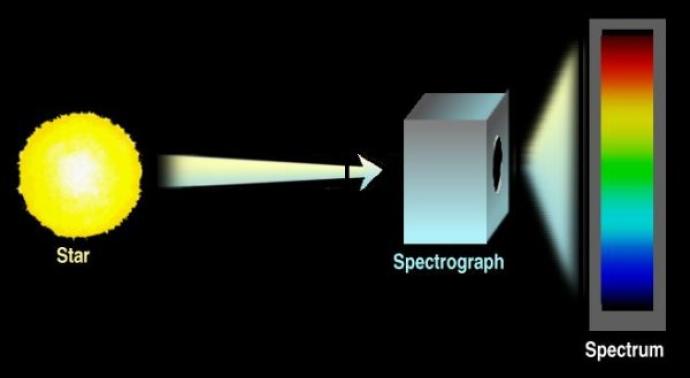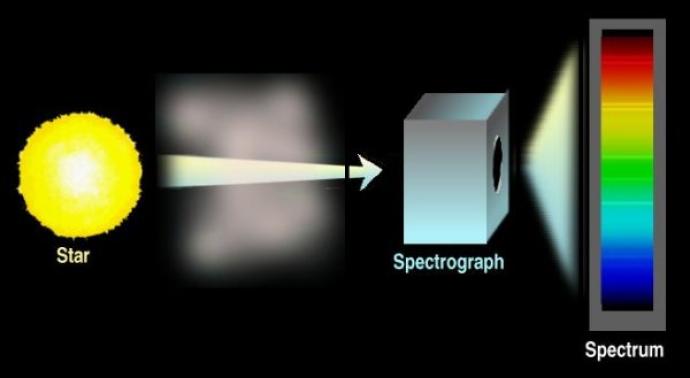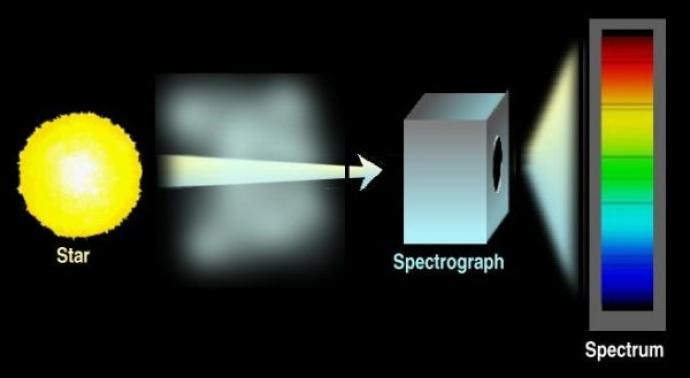Even though light often looks white, it is made up of lots of different colours all added together.
The range of colours that make up the white light is called spectrum of the light. We can talk about different parts of the spectrum, like the blue part or the red part.
White light can be split into different colours using a prism. When light moves from the air into the prism, it bends. This bending is called refraction. Different colours bend by different amounts, so they come out of the prism at different angles.

Astronomers often want to know exactly what colours of light there are coming from a star or galaxy. To measure this, they use an instrument called a spectroscope. These have prisms, or gratings, inside them which separate the light. They then record the data.
We can see other features in a spectrum using a spectrograph. Sometimes there are bright lines which are made when a lot of light is emitted at a particular wavelength. This could be from a nearby star forming region.
Sometimes there are dark lines which are made when some light is blocked or absorbed. This can happen a lot with stars, which have their own atmospheres. This contains lots of different atoms and molecules that block particular wavelengths, or colours, of light. The colour which is blocked depends on what atom is in the way.

Our Sun has hundreds of these dark lines at different colours, all due to atoms in the Sun's atmosphere. Hot things like stars tend to glow, and this makes light in all the different colours of the spectrum.
However, atoms can emit (make) or absorb (destroy) light of very specific colours. When the atoms in a gas are hotter than the incoming light, they emit light, and when they are colder, they absorb it.
Different atoms make or absorb different sets of colours. This means that astronomers can tell what atoms a star is made of by looking at the different colours that have been made or absorbed by the atoms.
You can see how this works below:
- Plain Starlight
The light from the surface of a star makes a smooth spectrum of colours.
Image CreditThis work by The Schools' Observatory is licensed under All rights reserved
CreditThis work by The Schools' Observatory is licensed under All rights reserved- Passing through hot gas
The atoms in a hot gas emit narrow lines of light at different colours. These are then added to the light from the star's surface. You can find hot gases in the outer layers of a star's atmosphere.
Image CreditThis work by The Schools' Observatory is licensed under All rights reserved
CreditThis work by The Schools' Observatory is licensed under All rights reserved- Passing through cold gas
The atoms in a cold gas will absorb some colours of light from the star. The gas just needs to be cooler than the star's surface, and you can find cooler regions like this in a star's inner atmosphere.
Image CreditThis work by The Schools' Observatory is licensed under All rights reserved
CreditThis work by The Schools' Observatory is licensed under All rights reserved
